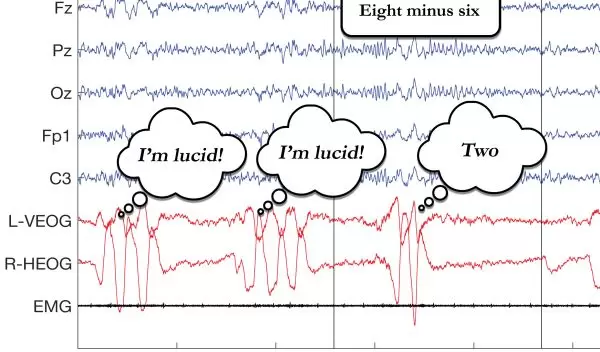
NSF-supported researchers achieve two-way communication with dreaming people
Researchers supported by the U.S. National Science Foundation have successfully achieved two-way communication with dreaming research participants sleeping in a laboratory at Northwestern University, creating a new method for studying the human mind.
The breakthrough was also achieved at Osnabrück University in Germany, Sorbonne University in France and Radboud University Medical Center in the Netherlands, where researchers independently tested methods for two-way communication in dreams. The collective results from all the laboratories are published today in the journal Current Biology.
The Northwestern University scientists played randomly selected audio recordings of simple math problems as their research participants were asleep and lucidly dreaming. A lucid dream is one in which the sleeper is aware that they are dreaming. Participants then perceived the scientists' questions within their dream. By monitoring electrical signals from the sleeping participants' brain and eyes, the researchers showed that participants successfully answered the questions while remaining in REM sleep. The breakthrough challenges current paradigms of human consciousness.
"We know that a great deal of cognitive processing takes place during sleep. This discovery points to an entirely new way to explore not only how sleep affects our memory but also how we solve problems and think creatively when we're awake," says Betty Tuller, co-director of NSF's Perception, Action and Cognition program, which supported the research. The program funds theoretically motivated research on a wide range of topic areas related to human behavior, with particular focus on perceptual, motor and cognitive processes and their interactions.
"NSF investments in fundamental science research like this study are critical to understanding what goes on behind the scenes in our brain," said Mike Hout, program co-director. "This study challenges what we think we know about human consciousness, and there is still a great deal more to uncover."
For the full story, check out NSF's Science Matters blog: "Scientists break through the wall of sleep to the untapped world of dreams."


